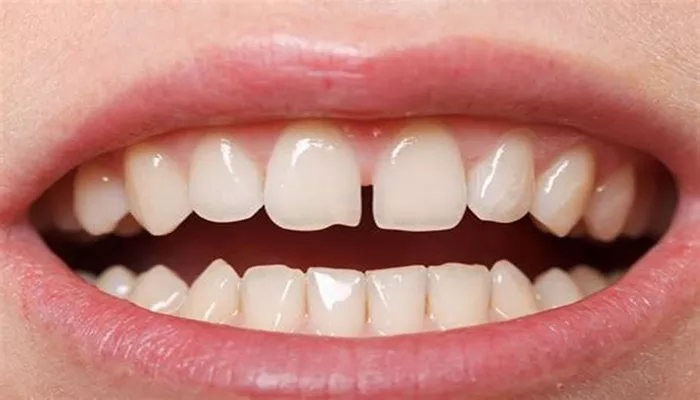Tooth bonding is a popular cosmetic dental procedure used to improve the appearance of teeth. It involves applying a tooth-colored resin material to the surface of a tooth, which is then shaped and hardened with a special light. This procedure can effectively fill gaps between teeth, repair chips, or cover discolorations.
For people with small spaces or gaps between their teeth, tooth bonding offers a quick and affordable solution. Unlike veneers or crowns, bonding is minimally invasive and often requires little to no removal of the tooth structure.
Factors Influencing the Cost of Tooth Bonding for Gaps
The cost of tooth bonding varies widely based on several important factors:
Size of the Gap: Larger gaps require more material and chair time, increasing the price.
Number of Teeth Treated: Bonding one tooth costs less than bonding multiple teeth.
Geographical Location: Dental costs tend to be higher in urban areas or regions with a higher cost of living.
Dentist’s Experience and Reputation: Highly skilled cosmetic dentists may charge more for their expertise.
Dental Office Overheads: Modern offices with advanced technology may have higher fees.
On average, the cost to fill a small gap with tooth bonding typically ranges between $100 and $400 per tooth in the United States.
Comparison with Other Cosmetic Dental Procedures
Tooth bonding is generally more affordable compared to porcelain veneers or dental crowns, which can cost anywhere from $800 to over $2,500 per tooth. While bonding offers a cost-effective solution, it may not last as long as veneers or crowns, especially if the patient grinds their teeth or does not maintain good oral hygiene.
The Procedure: What to Expect During Tooth Bonding
Tooth bonding to close a gap usually requires only one visit. Here is a simple overview of the steps:
Preparation: The dentist selects a composite resin color that matches your natural teeth.
Etching: The tooth surface is roughened slightly with a mild acid solution to help the resin adhere better.
Application: The resin is applied in layers, molded to fill the gap and shaped to match the natural contours of the tooth.
Curing: A special curing light hardens the resin quickly.
Finishing Touches: The bonded area is polished for a smooth and natural look.
The entire process typically takes 30 to 60 minutes per tooth and causes minimal discomfort.
Longevity and Maintenance of Bonded Teeth
Although tooth bonding is durable, it is not as strong as natural teeth or other restorative options. The resin material may chip or stain over time, especially if you:
- Chew on hard objects like ice or pens
- Grind or clench your teeth (bruxism)
- Consume staining substances like coffee, tea, or tobacco
Regular dental checkups and good oral hygiene are essential to prolong the life of bonding. If damage occurs, the resin can often be repaired or replaced relatively easily compared to other restorations.
Relation Between Tooth Bonding and Other Dental Conditions
In some cases, underlying dental issues may need to be addressed before bonding. For example, untreated gum disease can cause gum recession or tooth mobility, which may compromise bonding results. Similarly, if the tooth has deep decay or infection reaching the pulp, root canal treatment might be necessary before cosmetic procedures.
Patients should discuss their full dental health history with their dentist to ensure tooth bonding is appropriate and will deliver lasting benefits.
Insurance and Financing Options for Tooth Bonding
Since tooth bonding is often considered a cosmetic procedure, many dental insurance plans may not fully cover the costs.
However, if bonding is performed to repair damage from trauma or to protect tooth structure after decay removal, some insurance plans might provide partial coverage.
Many dental offices offer financing plans or payment options to make bonding more affordable. It is recommended to discuss these options upfront with your dentist’s office.
Potential Risks and Limitations of Tooth Bonding
Tooth bonding is a safe procedure, but like all dental treatments, it has some limitations:
Durability: Bonding resin is not as strong as natural enamel or porcelain, and may chip or wear down over time.
Color Stability: Resin can stain or discolor, especially if exposed to certain foods, drinks, or smoking.
Not Ideal for Large Gaps: For significant spaces or structural issues, veneers or orthodontic treatment might be better options.
Understanding these limitations helps patients set realistic expectations for tooth bonding outcomes.
Alternative Treatments to Fill Gaps Between Teeth
If tooth bonding is not suitable, other dental treatments to fill gaps include:
Porcelain Veneers: Thin shells of porcelain bonded to the front surface of teeth for a natural look and longer-lasting results.
Dental Crowns: Caps that cover the entire tooth, used when teeth are damaged or decayed.
Orthodontic Treatment: Braces or clear aligners that move teeth gradually to close gaps.
Dental Implants or Bridges: For missing teeth, these options restore function and aesthetics.
Each option has different costs, benefits, and timeframes. A dental consultation can help identify the best treatment plan.
When to Consult a Dentist About Tooth Bonding
If you have gaps in your teeth that bother you, or if you want to improve your smile, consulting a dentist is the first step. The dentist will evaluate your oral health, discuss your goals, and recommend whether tooth bonding or another treatment is best.
Addressing related issues like gum disease before cosmetic treatments ensures better long-term results and prevents complications.
Conclusion
Tooth bonding offers an affordable, quick, and effective way to fill small gaps between teeth. The cost generally ranges from $100 to $400 per tooth, influenced by gap size, location, and dentist expertise. While bonding is less expensive than veneers or crowns, it requires maintenance and may not last as long.
Before bonding, dental health issues like gum disease or root canal needs should be addressed. Insurance may not cover cosmetic bonding fully, but financing options can help make the treatment accessible.
Ultimately, tooth bonding can enhance your smile and confidence when done under professional care and combined with good oral hygiene.

